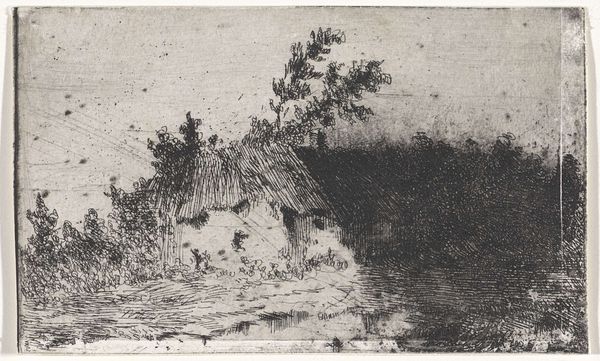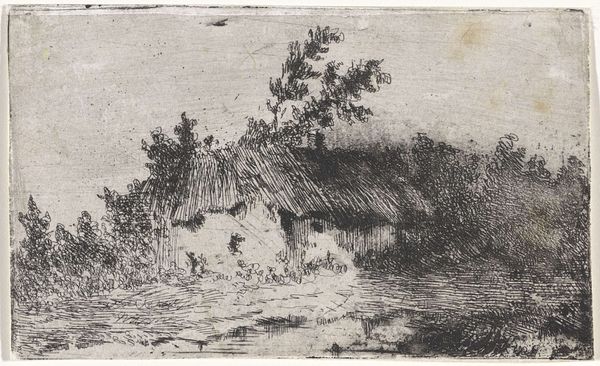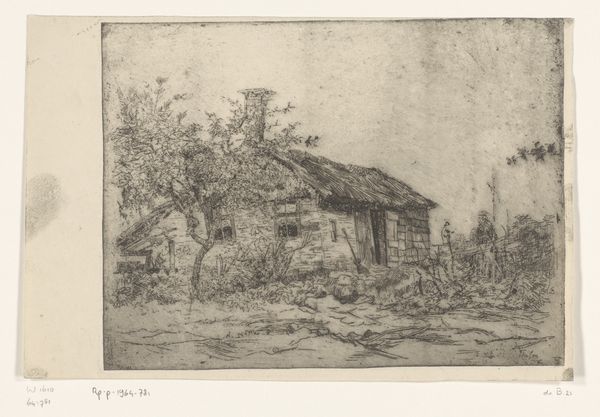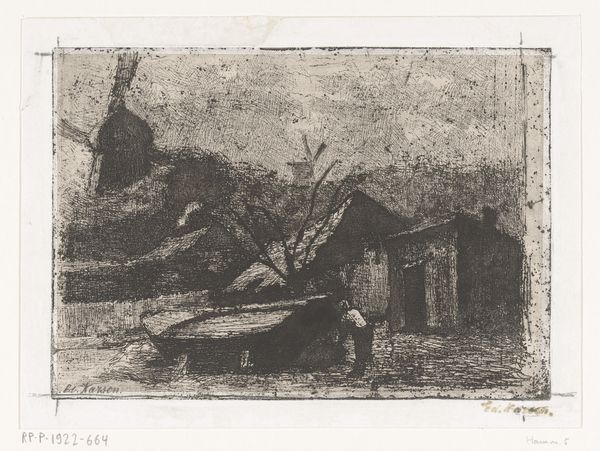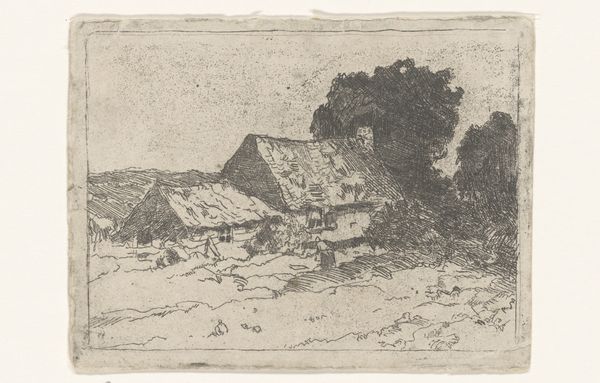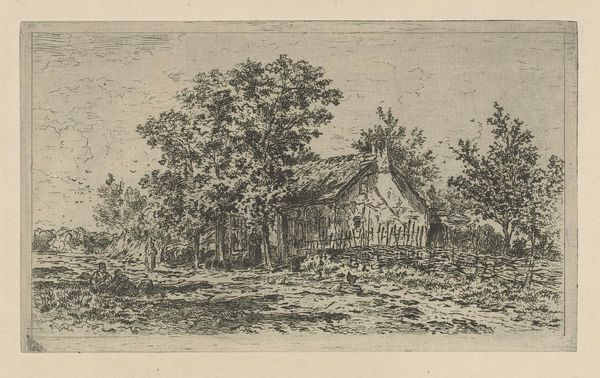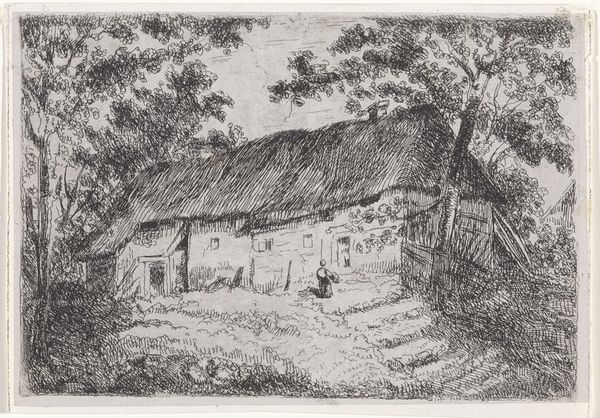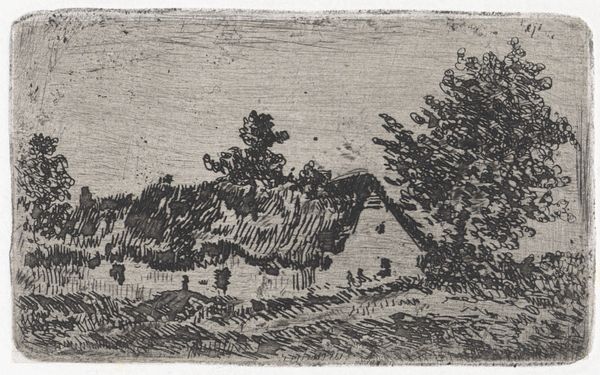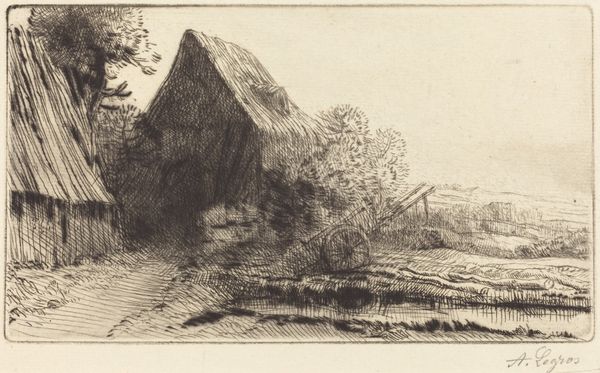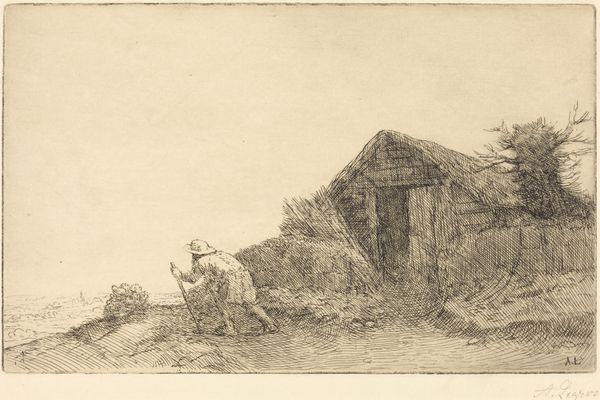
etching
#
etching
#
landscape
#
realism
Dimensions: height 78 mm, width 127 mm
Copyright: Rijks Museum: Open Domain
Editor: This is “Hut met rieten dak,” or “Hut with thatched roof,” an etching by Arnoud Schaepkens, created sometime between 1831 and 1904. It's such a textured, almost gritty image. The etching seems to emphasize the materiality of the scene. What jumps out at you when you look at it? Curator: What strikes me immediately is the labor inherent in the subject and the medium. The thatched roof, painstakingly crafted from natural materials, speaks to a specific kind of work. Etching itself, of course, is a laborious process, demanding skill and time to transfer an image onto a metal plate. Considering this piece through a materialist lens, what can we deduce about the relationship between labor and landscape? Editor: It makes me think about the value placed on rural labor versus artistic labor. Was Schaepkens trying to elevate the status of rural life by depicting it with such detail? Curator: Perhaps. The decision to use etching, a printmaking technique allowing for reproduction and wider dissemination, further complicates this. He's transforming the everyday into art, but also potentially commodifying it. Does the rough, almost unfinished quality of the etching enhance or detract from its artistic value, and what does that tell us about societal views of labor and refinement? Editor: That’s interesting, I hadn’t thought about the potential commodification aspect. I guess the "unfinished" quality almost emphasizes the raw, unglamorous nature of the work being depicted. Curator: Exactly! We’re left to ponder how Schaepkens, through the very act of creation and the materials employed, comments on labor, value, and the artistic process itself. Editor: This perspective on the artistic process as labor definitely shifted my view. It brings the making into focus. Thanks! Curator: My pleasure! It's about uncovering the layers of meaning embedded within the materials themselves.
Comments
No comments
Be the first to comment and join the conversation on the ultimate creative platform.
